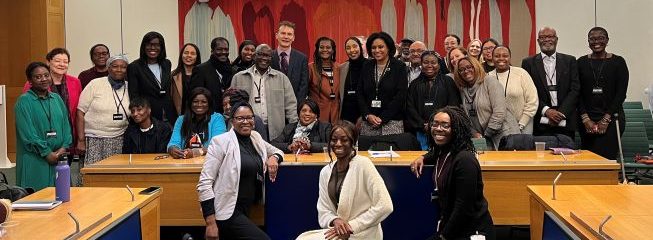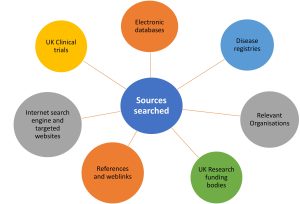A quick recap
Last month, we outlined the plans for the literature review, data analysis and engagement with patients and healthcare professionals components of our Sickle Cell Comparative Research project. This month, we report our progress (preliminary results) with the literature review and data analysis work.
Reflecting on our progress over the last four weeks
We kicked off this month by attending the Sickle Cell and Thalassemia All-Party Parliamentary Group (SCT APPG) meeting at the houses of parliament. John James OBE, CEO of the Sickle Cell Society and MP Janet Daby explored key advancements in sickle cell disease treatment. Community members had the opportunity to voice their questions and concerns.

OBJECTIVE 1: PERFORMING LITERATURE REVIEW SEARCH
- After finalising the protocol of our literature review, we searched 3 electronic databases (MEDLINE and PsychInfo which include published scientific journal articles on a range of topics (e.g. medicine, health and behavioural and social sciences) and the Health Management Information Consortium which includes reports from the Department of Health and The King’s fund).
- Besides the electronic databases, we have also identified relevant literature from organisations such as the Sickle Cell Society a
 nd the Cystic Fibrosis Trust, targeted webpages, disease registries and google searches.
nd the Cystic Fibrosis Trust, targeted webpages, disease registries and google searches.
- We used search terms relating to our conditions of interest (e.g. “sickle cell disease”), inequalities (e.g. “barrier”, “survival”, “access”) and the United Kingdom (e.g. “Britain”, “UK”)
- We included studies of children and adults of any age and in any setting (e.g. GP, hospital and community) and excluded studies published before 2010.
- In total, our search yielded 905 articles across all 3 databases, after excluding 74 duplicate studies
- The title and abstract of 831 papers have been screened and so far 25 papers have been included in the final literature review.
- More information on our findings from these studies will be shared next month!
OBJECTIVE 2: CONDUCTING DATA ANALYSIS
- Using NHS hospital episodes statistics admitted patient care data, we included all individuals with clinical codes, International Classification of Diseases 10th Revision, for sickle cell disease, cystic fibrosis and haemophilia between 2013 and 2022.
- We captured information on age at first hospital admission, gender, ethnicity and geographical region
- We used the 2019 English Indices of Multiple Deprivation to capture information on deprivation (from least deprived to most deprived areas)
- In total, after cleaning the dataset and performing exclusions (e.g. excluding those with missing age at hospital admission), we began the data analysis for this study.
- While we are keen to share regular updates on our progress, we want to provide accurate comparisons with several indicators of inequalities. This requires careful analyses of the health data outlined above, which usually take weeks rather than days.